Article: What does happen with the social investment in Chile?
Philanthropy and social investment have become an important issue worldwide. It has turned into a fashionable cultural shift from short-term to long-term approaches and strategic partnerships, focused on giving outcomes and impact. More corporate foundations, families and high net-worth individuals are getting involved in social impact investment. In a region where the government is still the main provider of social programmes, philanthropy remains scarce, especially if we compare it with the American and British reality; thus, this is a very welcomed development in a country such as Chile, where social impact investment is growing exponentially.
Institutional philanthropy in Chile has demonstrated a strong dynamism in the last ten years. While 56% of the foundations are more than 11 years old, 44% are much more recently founded. This growth is mainly explained by the emergence of family foundations. This dynamism shown by institutional philanthropy in Chile allows the promotion of a sector that understands its specific role and addresses the following challenges:
-Diversify social investment, geographically and thematically.
-Defining efficient operational models and strengthening the governance and transparency of the foundations themselves.
We have a generation of outstanding leaders of social change worldwide and in Chile. They are demonstrating that it is possible to move forward against global challenges, at the individual and community levels, and now they are turning to focus on solving these problems at scale; in a deeper partnership with the government, other NGOs and the private sector. We also have more philanthropists with more resources than ever before, many of whom share a strong aspiration to achieve a massive and lasting impact. A survey made by Barclays Wealth Management found that 70 percent of the billionaires around the world report were active in philanthropy. The Giving Pledge has mobilized some 170 wealthy individuals and families from 21 countries to commit to giving away at least half of its estimated net worth of more than $800 billion. Typical qualities of a social investor are strong sense of purpose and commitment to push forward and to find the best way to address important social problems.
Everyone who has committed to philanthropy has a story. If you are part of a family with assets, a passionate citizen, a professional citizen, or a business leader you can do much to provoke deeper conversations about the power and potential of philanthropy and social investment. Social investors should focus on their philanthropic decisions as they do on their financial investments and should address each issue analytically researching for possible solutions. We know the phrase “social impact” is in vogue and it is often misused to imply even minimalist change. We must demand that social impact stands also for a significant shift in society.
The Empatthy Philanthropic Curve has been inspired by practice and by other colleagues’ experiences and highlights five stages in the evolution of the philanthropic donor travel. Empatthy believes it is an extremely useful tool for donors to connect with their values, ideals and passions and how to invest in philanthropic resources. Moreover, for many, what comes next is a desire to organize and learn to control the process, instead of letting the process to control them. Some donors go further and are more strategic, recognizing their obligations, but focusing more on the social issues or needs that affect them the most.
The next step is to see the results, find and invest in the best strategies in order to achieve greater impact in the community.The inspiration and involvement of donors begin with other donors by creating models that can be replicated and have a lasting impact. At this point, the donor feels more expert in what he or she needs and clearer to where the donor wants to achieve the greatest impact. In summary, there are different reasons why family members decide to work together in philanthropy and social investment. We believe that identifying the advantages of working together and facilitating other decisions such as family participation, decision – making process and the strategies to follow. However, there no definite rules about who should be involved in family philanthropy because there some family foundations where only children participate; while in others wives, partners, cousins and even close friends participate as well. In terms of what families choose, many locate some or all of the selected areas, populations or locations in an effort to make a difference and achieve greater control over the social investment process.
Others choose to keep their investment options open so they can respond to needs that arise and diverse interests within the family. For many others, combining the two approaches encourage the greater involvement of all its members. There is no single recipe but planning and uniting the heart and the head in order to achieve a larger and better impact.
Core funding, especially for philanthropy infrastructure is fundamental in order to promote in a more informed, connected way and in an effective ecosystem of philanthropy for systemic change. Core support is crucial and it should be seen not as a cost, but as a way of investing in this very same effective system of philanthropy in Chile, where each stakeholder is strengthen and can benefit from it.
Article: What does happen with the social investment in Chile?
http://www.philanthropy-impact.org/report/chile-making-significant-and-positive-changes







